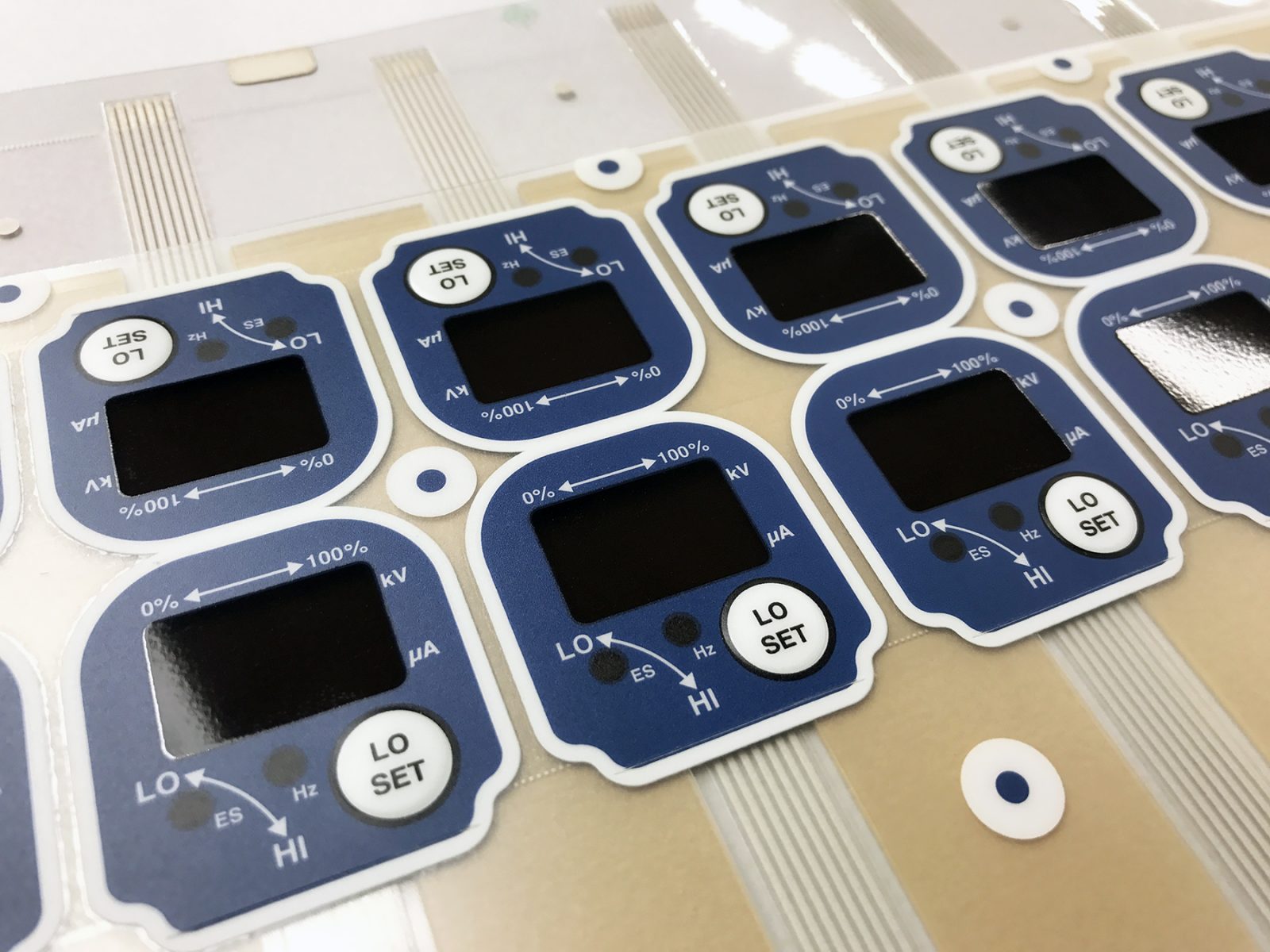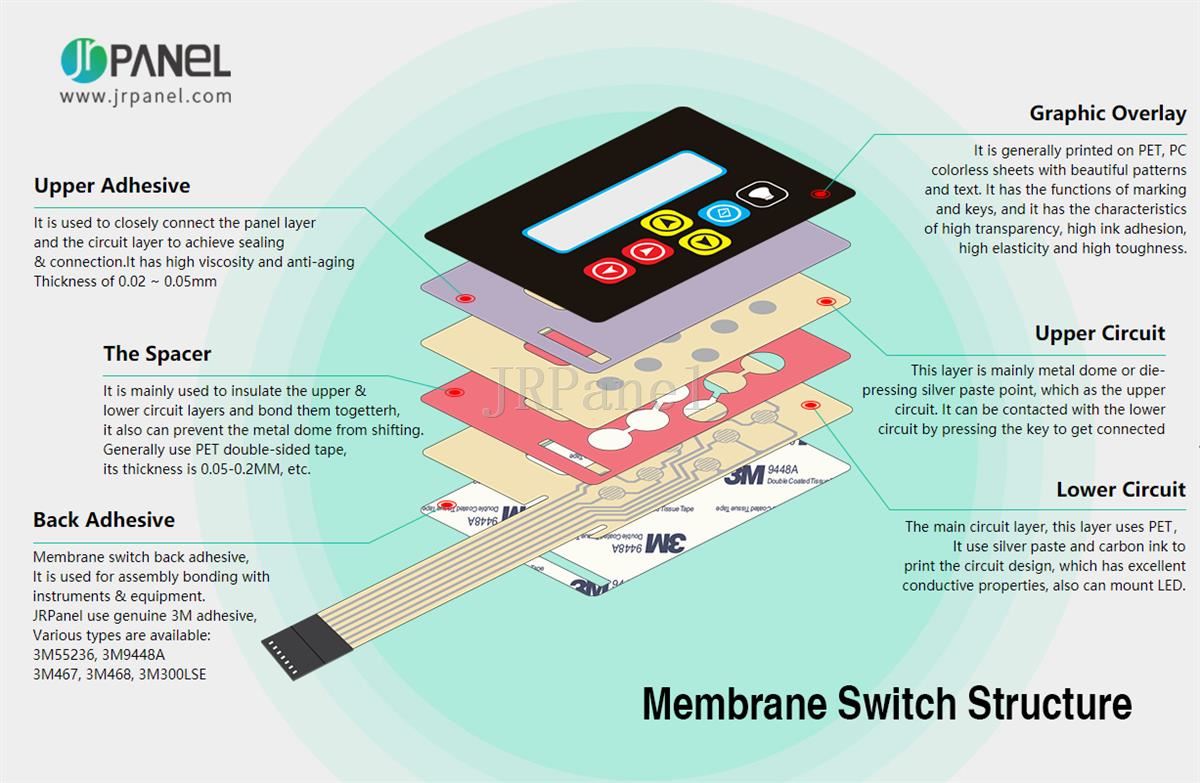The Benefits of Making Use Of Membrane Layer Switches in Customer Electronics
Membrane layer switches are progressively identified for their considerable benefits in customer electronic devices, specifically in enhancing user interaction and improving manufacturing procedures. Their capacity to give intuitive user interfaces and responsive comments can considerably reduce individual mistakes, while their light-weight construction and simplified manufacturing actions contribute to cost-effectiveness and quicker market entrance. Additionally, the adaptability in layout enables customized remedies that meet varied customer demands. Yet, the ramifications of these advantages prolong beyond mere capability, meaning a transformative potential for the future of electronic devices. What further benefits might arise as this technology advances?
Improved Individual Experience
In today's affordable landscape of customer electronic devices, boosted user experience is critical; nearly 85% of customers prioritize intuitive user interfaces. Membrane switches play a critical role in achieving this level of functionality.
The responsive responses given by membrane layer buttons is necessary for assisting user activities, guaranteeing that commands are registered properly. This comments mechanism minimizes mistakes and enhances customer contentment, promoting a favorable partnership in between the individual and the device. The customizable nature of membrane layer switches over permits makers to tailor user interfaces to particular individual requirements, making tools more available and inviting.
In addition, membrane layer switches can integrate backlighting and graphic overlays, additionally boosting presence and usability in varied environments. This versatility guarantees that devices continue to be functional and straightforward, no matter the setup. Generally, the combination of membrane layer switches into consumer electronics dramatically improves individual experience, driving brand loyalty and contentment in a progressively open market.
Cost-efficient Production
Consumer electronic devices suppliers are regularly seeking ways to stabilize quality with price, and membrane switches provide an engaging remedy for economical manufacturing. membrane switch. These elements are inherently simpler than traditional mechanical switches, which reduces both production costs and intricacy. The light-weight style of membrane changes permits reduced shipping expenditures and simpler assimilation into small gadgets, even more enhancing their charm in an open market

Producers can generate membrane layer buttons in high quantities, making the most of economic situations of scale. This automation capability guarantees constant high quality while dramatically decreasing per-unit costs. Furthermore, the materials made use of in membrane buttons, such as polyester and polycarbonate, are usually much less pricey than those needed for conventional button innovations, adding to overall expense savings.
The production process for membrane layer switches over generally needs less steps and much less labor contrasted to various other button types. This streamlined strategy not just conserves on labor expenses yet also increases time-to-market, enabling business to react quickly to consumer demand. As a result, the combination of lowered product expenditures and effective manufacturing processes positions membrane changes as a clever financial investment for makers aiming to provide top quality customer electronic devices at affordable rate factors.
Design Adaptability and Modification
While typical mechanical buttons often impose restrictions on style as a result of their bulk and required mounting systems, membrane layer buttons offer unrivaled adaptability and personalization options for consumer electronics. This cutting-edge technology enables designers see this here to create sleek, low-profile interfaces that can perfectly incorporate right into numerous item aesthetic appeals, from mobile phones to cooking area devices.
Membrane layer switches can be generated in practically any kind of shape or size, making it possible for makers to customize the layout to certain ergonomic and functional needs. This flexibility not just improves user experience yet likewise enables imaginative designs that align with brand name identification. Furthermore, making use of printed graphics on membrane changes uses the possibility for elaborate designs and dynamic colors, which can be quickly customized without significant expense effects.
Furthermore, membrane layer switches can incorporate several performances right into a single layer, minimizing the requirement for numerous elements and simplifying setting up processes. This structured style strategy reduces space and weight, making it excellent for compact customer electronic devices. In general, the style flexibility and modification capabilities of membrane layer switches empower producers to innovate, inevitably resulting in even more engaging and user-friendly products.
Resilience and Dependability
As modern technology proceeds to advance, the longevity and dependability of membrane switches have actually become essential considerations for makers in the customer electronic devices industry. Membrane layer switches are created to hold up against harsh environmental conditions, consisting of temperature level fluctuations, moisture, and dust direct exposure. Their durable building and construction frequently involves multi-layered products that provide a reliable obstacle versus pollutants, ensuring longevity and regular performance.
In enhancement to ecological resistance, membrane layer switches over offer premium mechanical integrity. Unlike conventional mechanical buttons, which might break gradually, membrane layer switches over utilize a covered design that lessens the risk of mechanical failure. The lack of moving components not only enhances their life expectancy yet also decreases deterioration, making them optimal for high-usage applications.
Moreover, membrane switches can sustain click site a substantial variety of actuations without loss of functionality, usually going beyond millions of cycles (membrane switch). This toughness converts to lower substitute expenses and decreased downtime for customers and makers alike. Generally, the combination of ecological resilience and mechanical integrity makes membrane layer switches over a strategic choice for consumer electronics, making certain that tools stay effective and functional throughout their intended lifespan

Streamlined Item Advancement
The sturdiness and dependability of membrane switches over substantially contribute to structured item advancement in the customer electronics industry. By integrating these buttons early in the layout procedure, suppliers can minimize the intricacy and variety of parts needed in their products. Membrane buttons are compact and light-weight, allowing for much more efficient area usage within gadgets, which can bring about streamlined setting up processes.

The simplicity of producing membrane layer switches additionally plays an essential function in product growth. With modern-day printing techniques and products, manufacturing can be scaled effectively, decreasing lead times and decreasing waste. This results in lower manufacturing expenses, improving overall profitability.

Verdict
To conclude, membrane switches considerably enhance consumer electronics by giving an improved user experience, cost-efficient manufacturing processes, and versatile layout alternatives. Their toughness and integrity guarantee constant performance in various atmospheres, while structured item advancement facilitates quicker time-to-market. These benefits collectively add to the advancement and capability of customer tools, dealing with the evolving demands of customers efficiently. The integration of membrane layer switches represents a tactical selection for producers looking for to optimize product design and efficiency.
Membrane switches are progressively identified for their substantial advantages in consumer electronics, particularly in boosting customer interaction continue reading this and enhancing manufacturing procedures. Additionally, the materials utilized in membrane layer buttons, such as polyester and polycarbonate, are frequently much less pricey than those required for traditional button modern technologies, contributing to total expense financial savings.
The production procedure for membrane layer changes typically requires fewer steps and less labor compared to other switch types. Unlike typical mechanical buttons, which may wear out over time, membrane switches use a closed design that minimizes the risk of mechanical failing.In verdict, membrane layer switches over considerably boost customer electronic devices by supplying an enhanced customer experience, affordable manufacturing processes, and versatile design options.